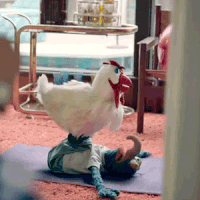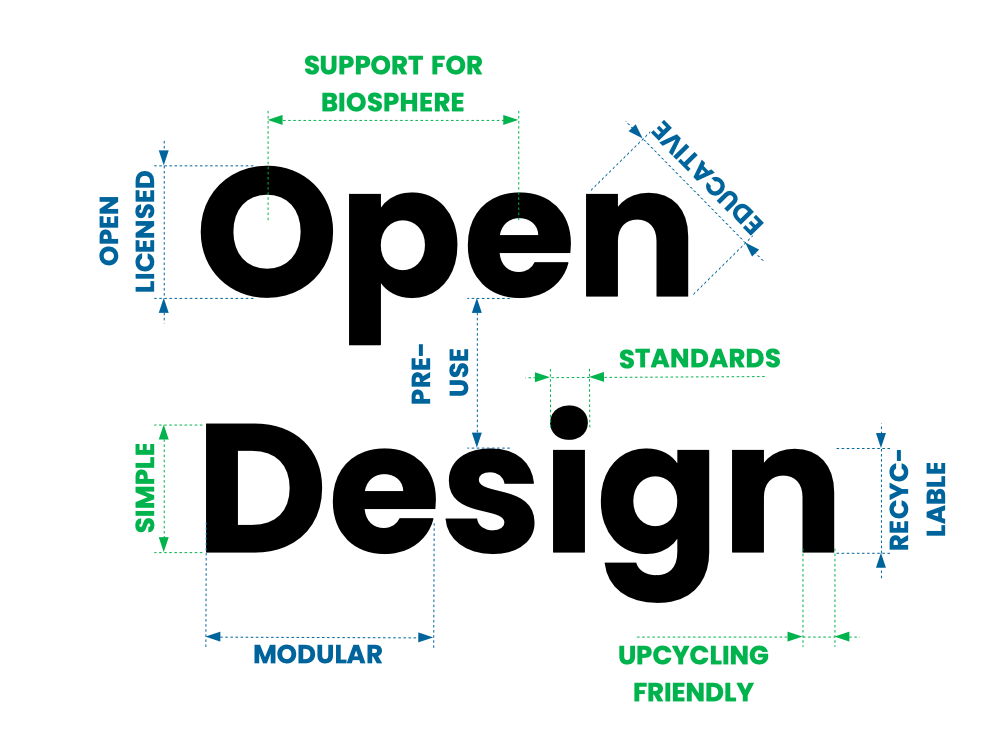Workshop Log
- Plate 2019 Conference, September 19, Berlin | Version ↓
- Summer school “Circular Economy” TU Berlin 2020, August 25, online
Link
opencircularity.info/pre-use-workshop
.
SUMMER SCHOOL
.
Hi,
My name is Lars Zimmermann, I am a designer, artist and activist from Berlin. I run a studio for open circular design called → Mifactori.
In this workshop we will discuss briefly Openness as an enabler for Circularity and go deeper into one strategy of Open Circular Design called “Pre-Use” and explore it with a little practical exercise
\(●◠‿◠●)/ ! 
Let’s go!
–
Open Source
The core of our work around circularity is to campaign for Open Source as a driver for Circular Economy.
Question 1: Who of you knows what Open Source means?
Discussion … | Definition of Open Source Software | Definition of Open Source Hardware
Question 2: Why do you think it could help us with enabling circularity?
Discussion … | What Is Open Source Circular Economy / Bold summary sentence in english version
–
Open Circular Design
Open Source is not just about sharing building plans under open licenses. It also is about designing things for Open Source for collaboration. Use tools, parts and methods many people can understand and access.
As designers of products we translated Open Source for us one step further to “Open Circular Design” and attached a couple of concrete design strategies to it.
→ Article “What Is Open Circular Design”
EXPLANATION
.
I am going to explain the strategies briefly. But first let’s have a look at 3 of our current prototypes.
Step 1: Briefly explain the prototypes.
Step 2: Briefly explain all strategies except Pre-Use
–
Pre-Use
Ok. Let’s have a look at this strategy. What I am going to show to you or talk about isn’t really that special and not new. On the contrary. And this is what makes it so good!
Let’s dive into it:
→ Pre-Use article
EXPLANATION
.
Step 1: Explanation of basic concept
Step 2: Showing Examples on Flickr | Category | @Home
Step 3: Going through the things from the article
1. Modularity | Extra-Link: „Hacking Modularity“
2. Reduce | Extralink: „Talk: Mifactori Open Design Lamp“
3. DIY Circularity | Extra-Link: „Hacking & Wealth“
4. Circular Design Inspiration
5. Education | Extra-Links: (1) Palast der Projekte – Explain the palace & the font, (2) Modular Fashion Workshop, (3) Modular Fashion Poster, (4) Manifest: Make Nachhaltigkeitsbildung Nachhaltig!
.
And Now: You ヽ(`Д´)ノ !
Here is our plan. We will create a little online exhibition about sustainable circular life. Everyone of you will create one piece for the exhibition. Here is how:
“Exhibition infrastructure”
TASK 1: Go and find some fasteners – clamps, strings, nuts and bolts in your home. Make sure they are pre-use compatible so tape does not count.
TASK 2: Other than that you can use everything you can find in your home to make an infrastructure or exhibition piece. But remember: Pre-Use! Leave it intact!
“Exhibition Piece”
TASK 3: You learned a lot circularity already. Take out one thing that inspired you, if possible something practical for example a zero waste strategy. Exhibit it. As said, you can make the thing yourself using pre-use techniques or find something you already have in your home, pockets or current environment and exhibit it with pre-use exhibition infrastructure.
–
You have XX min for that task. After that we will come together and everyone will briefly show and explain their exhibition piece. I will take screenshots.
–
Collaborative Exhibition Documentation
If we have time.
I took a picture of your piece and uploaded it to this → public Pad (What Is A Pad)
Please add two or three sentences under your picture.
…
–
FINAL READING, DISCUSSION, BYE BYE
We/I have a newsletter. Sign Up for more.
And here is our social media profiles for Mifactori and Open Circularity. Pls follow.
.
.
PLATE VERSION
Hello,
my name is Lars Zimmermann. I am artist, designer and activist running a studio for open circular design called Mifactori, sometimes work as a teacher or professor for open design & sustainable city making. I create theory mostly on modularity, openness and circularity and organise events – for example in the past an event called “Open Source Circular Economy Days”.
And today – it is pretty early in the morning (at least for a Berlin based designer & artist 😉 ) we are going to do a little practical morning exercize.
\(●◠‿◠●)/ ! 
But I’ll start with some theory before we go into practice.
PreUse
What I am going to show to you or talk about isn’t really that special and not new. On the contrary. But for me it is a very inspiring way to think about modularity for circularity.
I like to use the term “PreUse” for it and I’ve written an article about it. Let’s dive into it.
→ Pre-Use article
.
Explanation
.
Step 1: Explanation of basic concept
Step 2: Showing Examples on Flickr | Category | @Home
Step 3: Going through the things from the article
1. Modularity | Extra-Link: “Hacking Modularity”
2. Reduce | Extralink: “Talk: Mifactori Open Design Lamp”
3. DIY Circularity | Extra-Link: “Hacking & Wealth”
4. Circular Design Inspiration
5. Education | Extra-Links: (1) Palast der Projekte – Explain the palace & the font, (2) Modular Fashion Workshop, (3) Modular Fashion Poster, (4) Manifest: Make Nachhaltigkeitsbildung Nachhaltig!
.
And Now: You ヽ(`Д´)ノ !
OK. Here is what I planned for us to do. I brought a box full of fasteners with me. I am going to show them to you in a minute. We will use them to create an “exhibition of sustainable circular life” here in this space. You can use everything you can find here in this space as infrastructure or exhibition pieces. But remember: Pre-Use! Leave it intact!
So here are our steps:
A – Setting up the exhibition
I suggest you split into groups of 3, 4 or 5 people. You get your fasteners and you discuss what you want to exhibit. Maybe you have something cool in your pocket or you see in this space or you can build it or mimic it with your bodies … Then create exhibition infrastructure from the stuff we have here and your fasteners – a pedestal, a board… We have XX minutes time for this.
B – Visiting the exhibition
When the exhibition is set up we’ll open it! You can go around and see what the others have built. Try to figure out what you see. Discuss it with others – not the builders. | Maybe we’ll add an explanation round in the end with the builders. Let’s see if this is necessary.
C – Cleaning Up
When we are done with the exhibition let’s take everything apart and put it back in its place. That is an interesting experience. Most of the time at least.
D – Discussion
When we are done cleaning up and have a couple of minutes left, let’s sit down and discuss a little bit what we have made and saw. Ask questions. Make comments, and so on.
*
Questions (Conversation Starters)
How would this look like if it was made to be an X and an Y? (Refer to something from the exhibition.)
Modularity… Boundaries? Potentials? For Circularity & Climate Change Survival?
DIY Circularity? What can citizens do for circular economy and design? What is their role? How to get them involved? What could activists do?
Collection of stories. Everyone has pre-used something in their life! Tell us your example?
*
thanks
UPDATE: Some RESULTS here on Instagram or here on Twitter
Ad
We run a small but fine event on Open Source, Circular Economy and City Neighbourhoods – Open Source Circular Economy Day Berlin – October 12 & 13 2019. Drop by – and we also still have space in our program, if you want to suggest something, we are happy to hear about your idea.
–
Meta
Workshop Description from the programme:
Title If Everything was Made from Lego There Would be no
Garbage – Hacking Things Modular with Pre-use!
Description Modularity is a key to a more sustainable world of products and consumption. This workshop will introduce two interesting concepts about “modularity for sustainable circularity”. We will discuss “Pre-Use” and “Hacking Modularity”. Pre-Use means to use something for something different than it was intended for but in a way that it still works for the initially intended use afterwards. Hacking Modularity points to the idea that the majority of things around us are not modular but approaching things like a hacker can change that at least for some things. After a quick theoretical introduction to these concepts participants will build quick own statues and hacks at the conference venue using pre-use techniques.
